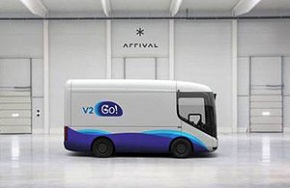Vehicle-to-grid (V2G) technologies
In February 2018, the Department for Transport announced a new £30 million investment in vehicle-to-grid (V2G) technologies that have been described as ‘revolutionary’. It is hoped that the new technologies will unlock the potential for electric vehicles to help power homes, as electricity can be delivered back to the smart grid.
As part of the government’s Industrial Strategy, set out in the Automotive Sector Deal, funding has been awarded to 21 V2G projects including EDF Energy’s V2GO scheme. This scheme aims to demonstrate how energy stored in electric vehicle batteries could be ‘borrowed’ during peak hours by the electricity system, and then be recharged during off-peak times.
It is hoped that by using electric vehicles in dense urban areas like Oxford, local emissions will be significantly reduced and air quality improved. The V2GO scheme is a large scale demonstration of V2G charging using 100 electric fleet vehicles (cars and vans) from a number of organisations.
The project will develop, trial and evaluate potential business models for fleet operators’ use of electric vehicles and their suitability for vehicle to grid (V2G) charging.
The assessment process for the funding has been concluded by Innovate UK, with almost £30m of government money being granted to industry-led collaborative R&D for up to 70% of project costs.
Transport Minister, Jesse Norman said:
“As the number of electric vehicles grows and their battery capabilities increase, there is a huge opportunity for them to make a significant contribution to a smart grid.
“These projects are at the cutting edge of their field. Just like the visionary designs of Brunel and Stephenson in transport, they could revolutionise the ways in which we store and manage electricity, both now and in the future.”
Dan Bentham, Head of R&D, Smart Customers, EDF Energy said:
“Electric vehicles will play an important role in the future of UK energy and its economy. They will have a beneficial impact on the environment by reducing emissions and improving air quality.
“Through our research, EDF Energy will use new technologies, business models and smart systems to make low carbon transport, and the infrastructure and market conditions needed for its success, a reality.”
(Ref. https://www.gov.uk/government/news/30-million-investment-in-revolutionary-v2g-technologies)
[edit] Related articles on Designing Buildings Wiki
Featured articles and news
RTPI leader to become new CIOB Chief Executive Officer
Dr Victoria Hills MRTPI, FICE to take over after Caroline Gumble’s departure.
Social and affordable housing, a long term plan for delivery
The “Delivering a Decade of Renewal for Social and Affordable Housing” strategy sets out future path.
A change to adoptive architecture
Effects of global weather warming on architectural detailing, material choice and human interaction.
The proposed publicly owned and backed subsidiary of Homes England, to facilitate new homes.
How big is the problem and what can we do to mitigate the effects?
Overheating guidance and tools for building designers
A number of cool guides to help with the heat.
The UK's Modern Industrial Strategy: A 10 year plan
Previous consultation criticism, current key elements and general support with some persisting reservations.
Building Safety Regulator reforms
New roles, new staff and a new fast track service pave the way for a single construction regulator.
Architectural Technologist CPDs and Communications
CIAT CPD… and how you can do it!
Cooling centres and cool spaces
Managing extreme heat in cities by directing the public to places for heat stress relief and water sources.
Winter gardens: A brief history and warm variations
Extending the season with glass in different forms and terms.
Restoring Great Yarmouth's Winter Gardens
Transforming one of the least sustainable constructions imaginable.
Construction Skills Mission Board launch sector drive
Newly formed government and industry collaboration set strategy for recruiting an additional 100,000 construction workers a year.
New Architects Code comes into effect in September 2025
ARB Architects Code of Conduct and Practice available with ongoing consultation regarding guidance.
Welsh Skills Body (Medr) launches ambitious plan
The new skills body brings together funding and regulation of tertiary education and research for the devolved nation.
Paul Gandy FCIOB announced as next CIOB President
Former Tilbury Douglas CEO takes helm.
UK Infrastructure: A 10 Year Strategy. In brief with reactions
With the National Infrastructure and Service Transformation Authority (NISTA).























